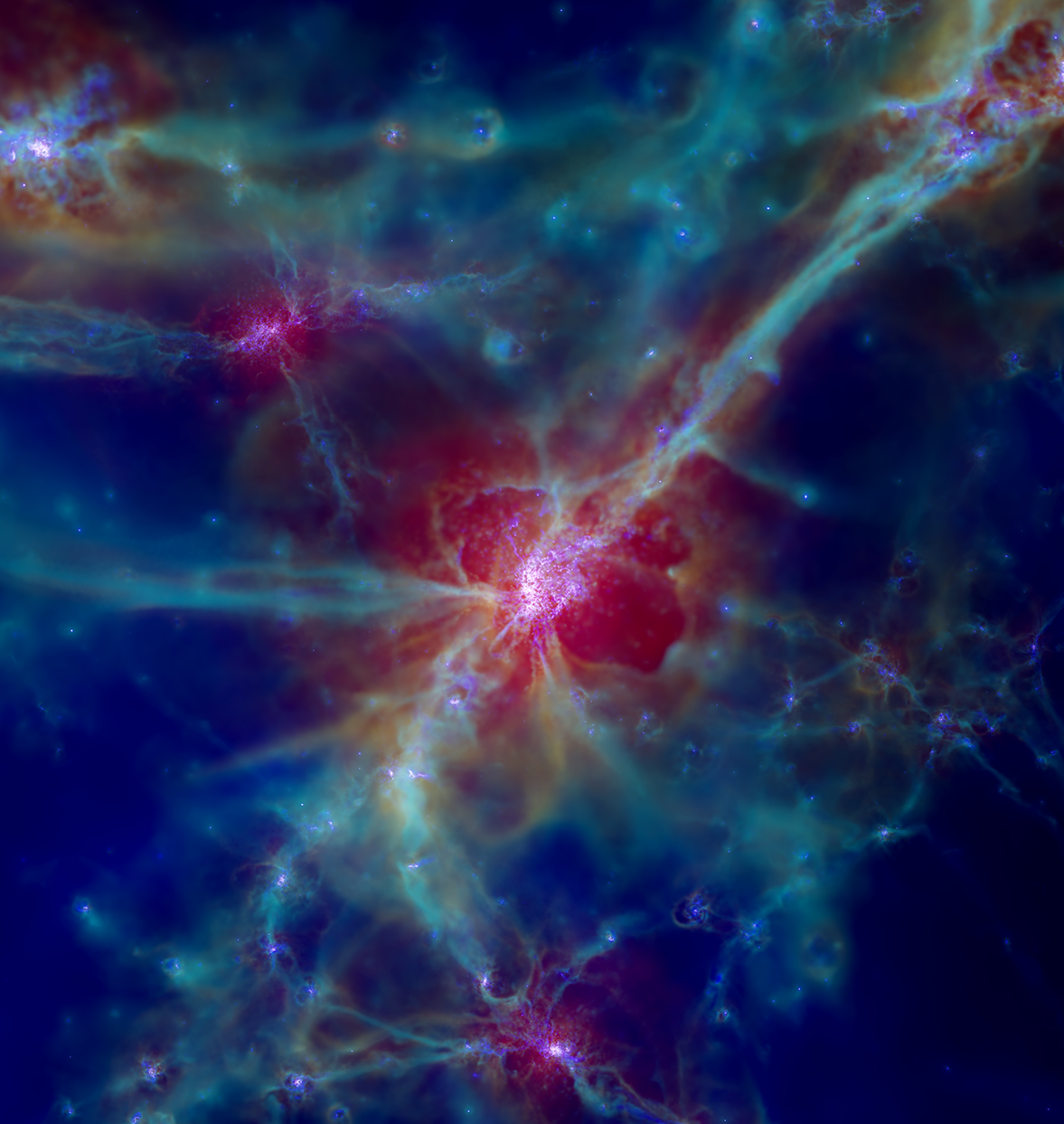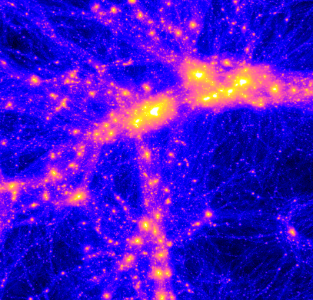Research
How and when did our Universe begin? What is it made of? How did it acquire its current appearance? The Ogden Centre was established to answer some of the oldest and most fundamental questions in science, including these.
Research in the Ogden Centre for Fundamental Physics
Since the Ogden Centre was founded in 2002, scientists around the world have made tremendous progress toward answering some of these questions. We have learned that ordinary atoms make up just 5% of the Universe, dark matter 20%, and the rest is dark energy. Gigantic surveys of galaxies are revealing how the Universe is structured. Large supercomputer simulations recreate the evolution of the Universe, from the Big Bang to the present. The Large Hadron Collider is providing data that can be used to test the Standard Model of Particle Physics and explore possible extensions. We now know that the Standard Model of Particle Physics is incompatible with the existence of dark matter and with the standard “cold dark matter” model of cosmology. Ogden Centre researchers have played a key role in these developments and will continue to be at the forefront of the search for a new physical formulation of our world.
The Ogden Centre is home to two research institutes, the Institute for Computational Cosmology (ICC) and the Institute for Particle Physics Phenomenology (IPPP). Learn more about our researchers’ latest discoveries.
The Institute for Particle Physics Phenomenology
Institute for Computational Cosmology
Research stories
Our researchers’ mission is to unravel the mysteries of the Universe using some of the world’s most advanced equipment and techniques. Our discoveries have received widespread media coverage from national and international news organisations, scientific journals and government agencies around the world.
Discover more
First images from new space telescope part-developed in Durham
Astronomers apply their skills to cancer research
Supercomputer simulations reveal new possibilities for the Moon's origin
Prominent Durham Professors named in Clarivate Highly Cited Researchers 2022
Scientists unveil most accurate virtual representation of the Universe
Research on the formation of galaxies wins Royal Astronomical Society award
Largest ever 3D map of the universe created
Higgs boson 10 years on
Physics Research at Durham
Take a look at some of our research and find out more about how we’re making an impact in astronomy, healthcare, business and industry.
The EAGLE Project
The EAGLE Project uses supercomputer technology to create realistic simulations of galaxies. This helps us to understand the origin and evolution of the universe and how galaxies like our Milky Way formed. Research by the EAGLE project was second out of the top 100 most cited papers published in the prestigious journal Monthly Notices of the Royal Astronomical Society (MNRAS) between 2010 and 2020.


/prod01/prodbucket01/media/durham-university/campaign-sites/ogden-at-20/86709-(1)-1920X290.jpg)

/prod01/prodbucket01/media/durham-university/departments-/physics/buildings/VT2A5811.jpg)
/prod01/prodbucket01/media/durham-university/central-news-and-events-images/news/press_release.00_00_00_00.Still003-News.jpg)
/prod01/prodbucket01/media/durham-university/central-news-and-events-images/James-Webb-first-images-WEB.jpg)
/prod01/prodbucket01/media/durham-university/central-news-and-events-images/news/Astronomycancer-research-homepage-499X167.png)
/prod01/prodbucket01/media/durham-university/central-news-and-events-images/news/Moon-simulations-web.png)
/prod01/prodbucket01/media/durham-university/campaign-sites/ogden-at-20/Carlos-Frenk.png)
/prod01/prodbucket01/media/durham-university/central-news-and-events-images/news/RAS-award-web.png)
/prod01/prodbucket01/media/durham-university/research-/DESI-3D-map-research-web.jpg)
/prod01/prodbucket01/media/durham-university/central-news-and-events-images/news/Large-hadron-collider.png)

